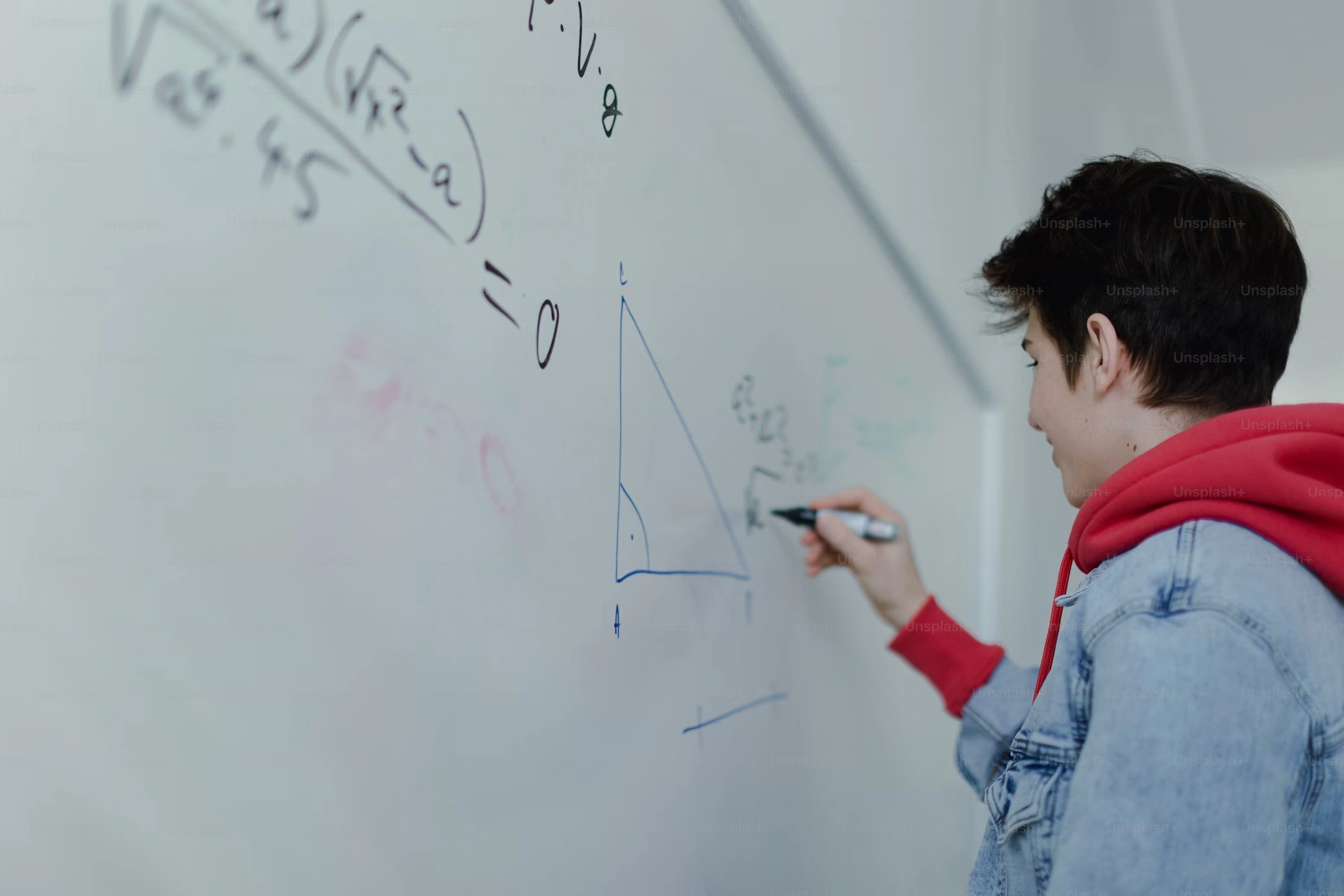What Math Is on the SAT: Things to Know
reviewed by Jo-ann Caballes
Updated on June 21, 2024
SAT is a unified test colleges and universities use to assess students’ skills and decide if they are qualified enough to enter. The examination includes testing of core writing and reading skills along with math proficiency, and it’s where most students stumble.
But indeed, each applicant can prepare for what is expected. All they need is a structured plan and a bit of guidance on what level of math is on the SAT and how to gain it.
Does the SAT have math?
The SAT test includes these types of math:
- algebra
- geometry and trigonometry
- advanced math
- data analytics and advanced problem-solving
The math test has two sections with 58 tasks in total: 45 multiple-choice questions and 13 questions with student-produced responses. Overall, SAT has the following flow:
- First, students have to solve 15 multiple-choice questions and 5 questions with student-produced responses. This part takes 25 minutes.
- Then comes the second part, which takes 55 minutes. It includes 30 multiple-choice questions and 8 questions where prospective students come up with independent answers.
And here comes some great news: 2025 is the year when the SAT becomes entirely digital. The main novelty is that test-takers can now use calculators during the whole test (previously, it was forbidden during the first part).
Even so, the substantial emotional pressure during the SAT, the restricted time, and the open questions that students especially fear make this test challenging for many. There can be only one solution to the issue: solid test preparation.
Luckily, there are many platforms like Brighterly that provide clear guidance to improve your child’s SAT math skills.

During personal 1:1 lessons, professional tutors focus specifically on the topics tested on the SAT Math test to help students excel in them.
What type of math is on the SAT
- Algebra (19-21 questions)
- Geometry and trigonometry (14-16 questions)
- Advanced math (11-13 questions)
- Problem-solving and data analysis (6-7 questions)
These types of math are on the SAT for good reasons. Let’s explore them in more detail.
Algebra
Algebra takes the biggest chunk of math topics on the SAT, so it requires intense preparation. This part will primarily focus on kids’ abilities to solve equations. To successfully handle the area, students should:
- Understand the concept of linear functions
- Be able to solve linear equations in one variable and two variables
- Know how to solve systems of two linear equations in two variables
- Be proficient in solving linear inequalities in one or two variables
Geometry and trigonometry
Geometry and trigonometry also cover many math topics on the SAT. So, make sure your high school graduates are well-trained in the following:
- Formulas for area and volume
- Lines, angles, and triangles
- Circles
- Right triangles and trigonometry

Advanced math
The advanced math section focuses on the more proficient math students need to continue their studies in STEM fields like science, technology, engineering, and math. The advanced SAT math topics are the cornerstones for further advancement in the subject. They include the following:
- Nonlinear equations in one variable,
- Systems of equations in two variables,
- Equivalent expressions,
- Nonlinear functions.
Problem-solving and data analysis
Generally speaking, this section of the SAT math test assesses how quantitatively literate the student is. It requires them to demonstrate their ability to apply their knowledge in future college programs, career training, and everyday life. More specifically, the section tests if students:
- Understand ratios, rates, proportional relationships, and units,
- Grasp the concept of percentages,
- Can analyze one-variable and two-variable data,
- Understand probability and conditional probability,
- Draw inferences from sample statistics and consider the margin of error,
- Can critically evaluate statistical claims to assess observational studies and experiments.
What level of math is on the SAT?
According to the information from Princeton Review, students cover SAT topics in 7th and 8th school grades. These are usually limited to Algebra and Arithmetic.
However, the level 2 math SAT already requires more profound knowledge in Trigonometry and Precalculus. Since the exam covers exact topics, there’s no way diligent students can stay unprepared for the test (sure, if they show enough motivation).
Now that students know what math is on the SAT, all they must do is practice.
Below is the list of eight template-like tasks that will likely appear on the SAT.
- There are two sides of a triangle that measure 6 and 10. What is the largest whole number length that the third side of a triangle can have?
- The car covered 10 miles at a speed of 30 miles per hour and then another 10 miles at a speed of 50 miles per hour. What was the overall average speed, in miles per hour, for the entire 20-mile journey?
- The average (arithmetic mean) score of a group of 20 students in a math test is 75. If 10 additional students join the group and the average score of all 30 students becomes 80, what is the average score of the 10 additional students?
- Let the function g be defined by g(x)=x3-4x . If b is a positive number such that g(3b) =2g(b), what is the value of b?
- A school purchased a variety of textbooks for its students: 20 books at $30 each, 15 books at $25 each, and z books at $18 each, where z is a positive even integer. If the median price for all the textbooks purchased by the school was $25, what is the greatest possible value of z?
- If cd and (c+d)2- (c -d)216, what is the least possible value of d?
- In a triangle ABC, the measure of angle A is equal to 3x degrees, and the measure of angle B is equal to 90 – x degrees. If tan A = cot B, so what is the value of x?
- To prepare a solution of 500 milliliters (mL) with a concentration of 30%, a chemist needs to mix a mL of a 20% solution with b mL of a 40% solution. What is the value of a?
Is it difficult to pass the math SAT?
Success on any exam depends primarily on a specific individual. The same goes for the SAT. However, if students are attentive enough during high school and pay enough attention to understand all the SAT math concepts, the test shouldn’t be too difficult for them. By the way, booking a lesson with an experienced tutor at Brighterly is also an excellent way to prepare for the SAT.
Here are some practical tips to help high school graduates maximize their preparation:
- Review past SAT exams. Sure, the questions won’t repeat, but at least it will give a hint about what is on the SAT math section.
- Learn & improve. Once high school graduates define their weak points, they should do their best to work on them.
- Students should memorize all the formulas and strategies covered on a specific topic. It’s a bad idea to remember all those formulas chaotically in the nick of time. And besides, it’s greatly inefficient, too.
- Find a tutor. Today, tutoring possibilities are literally endless. If a future test-taker is up for a convenient type, they can try studying online with tutors at Brighterly.
- As the test is time-limited, children must practice fast problem-solving under pressure.
Conclusion
As you can see, a high school graduate’s success at the math part of the SAT depends entirely on their involvement, the time they devote to the subject, and the topics they cover. So, if the excellent result is more realistic than one might think, why not dare to gain it?
If your high school graduate needs help with the SAT preparation, book a lesson at Brighterly for personalized, tailored help.













![Sylvan Learning Center Cost: All You Need to Know [2025]](https://brighterly.com/wp-content/webp-express/webp-images/doc-root/wp-content/uploads/2025/08/Sylvan-Learning-Center-Cost-360x200.png.webp)
